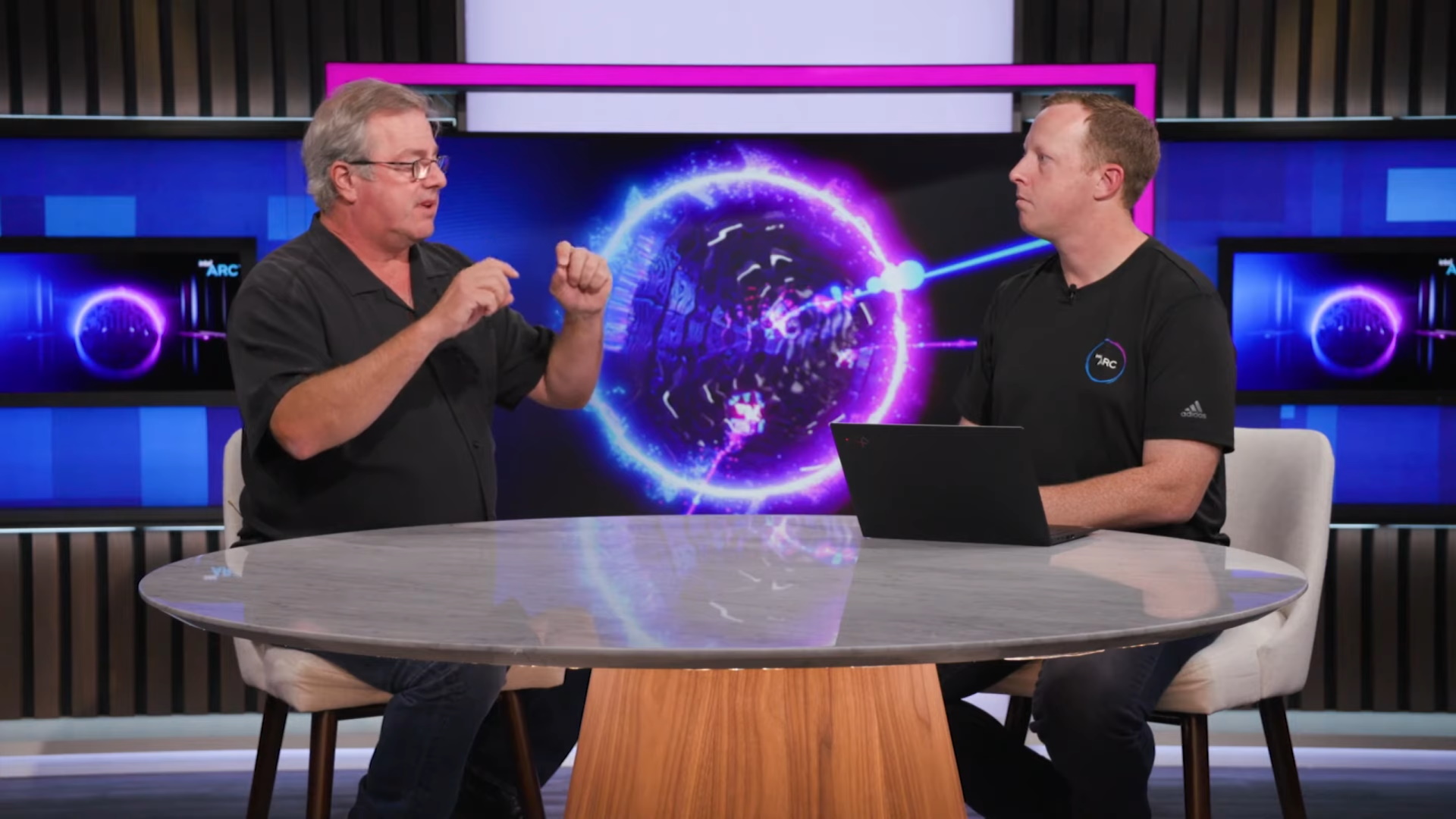The latest video for Intel’s Arc graphics cards (opens in new tab) has just dropped and it’s a bit of a doozy. In it, Intel’s Ryan Shrout and Tom Peterson tackle one of the biggest talking points about Intel’s new GPUs: DX11 and DX9 support.
As Tom Peterson highlights, “We expect DX12 titles and Vulkan titles to be very good performance relative to the competition. We’ve also said that on some DX11 titles we’re going to do great, but on other DX11 titles, we’re not going to do great. And it’s going to be a progressive improvement over time.”
Tom then explains why this is the case, and essentially, it’s down to the fundamental difference between low-level APIs like DX12 and Vulkan, which talk directly to the underlying hardware, and older legacy APIs, which have a much more high-level approach.
Those older APIs, the likes of DX11 and DX9, expect the graphics card drivers to do much of the heavy lifting to optimize the code paths to get the most out of the underlying silicon. The problem for Intel is that its GPUs are built in a different way to AMD and Nvidia, so there’s a lot of optimization needed to get those games up to the same level.
“We have to now start tuning all of our DX11 work to match what older titles have expected and done well with Nvidia and AMD,” continues Peterson, with the observation that this isn’t something you can complete overnight “It’s just going to be a labor of love for like forever.”
The takeaway here is that Intel’s new GPUs will have a much better time of it with new titles, and should be competitive with both AMD and Nvidia. The story for those older titles though? That’s going to take a lot longer to get right.
If your game of choice has a DX12 version, and plenty of more recent games do, then you should be looking at reasonable frame rates. If you want to run something that is built around DX11, or heaven forbid DX9, then you’re going to be beholden to Intel optimizing that title, and unfortunately for you and Intel, there are a lot of legacy titles out there to work through.
We still don’t have a date for when these new GPUs are going to launch outside of China. With Intel doing more and more of these videos though, you’d have to assume it’s imminent—assuming the manufacturers don’t stop producing cards (opens in new tab) before they’re even launched.


